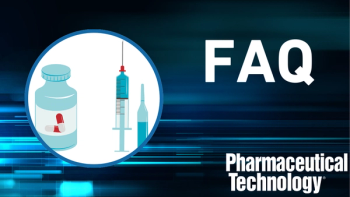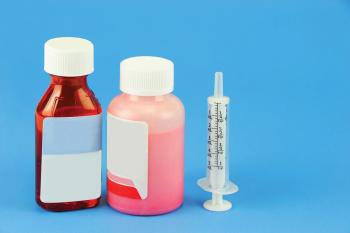
- Pharmaceutical Technology-06-02-2018
- Volume 42
- Issue 6
Emerging Technologies Advance Oral Drug Delivery
New approaches enable more patient-centric drug design that offers improved outcomes.
Oral delivery has long been regarded as the most preferred route of drug administration and over the years, research in this field has made significant strides despite the numerous challenges. Barriers limiting effective oral drug delivery include poor solubility, membrane permeability, hydrolysis or enzymatic degradation in the gastrointestinal (GI) tract, pre-systemic metabolism, and excretion of the active, among others. Drug developers and formulators, however, now recognize that better dosage form design can be achieved with proper characterization of the API’s physicochemical properties and an assessment of the potential formulation and manufacturing challenges during an early stage. Advances in oral drug delivery continue to open up new avenues for more patient-centric drug design that offer improved outcomes.
Digital pill tracks medication adherence
On Nov. 13, 2017, FDA announced the approval of the first digital pill that has a sensor embedded in it to track if patients with schizophrenia, bipolar disorder episodes, and depressionhave ingested their antipsychotic medication (1). Abilify MyCite (aripiprazole), marketed by Otsuka Pharmaceutical, was hailed as a revolution in addressing the adherence gap.Mitchell Mathis, MD, director of the Division of Psychiatry Products in the FDA’s Center for Drug Evaluation and Research, noted in a press statement (1) that the ability to track ingestion of medications prescribed for mental illness could prove useful for some patients.
The ingestible sensor, the size of a grain of sand, is embedded at the point of manufacture. It is activated when the tablet dissolves in the stomach and it communicates with a patch worn on the abdomen, which then transmits the date and time of tablet ingestion to the patient’s smartphone to track adherence (2). Patients can allow their physicians or caregivers to view their data through a web-based portal and the information can be useful in documenting improved patient outcomes and demonstrating treatment effectiveness (2, 3).
The sensor, composed of a silicon chip coated with minerals that form part of the human diet, is digested and eliminated from the body. Both the sensor and the patch are manufactured by Proteus Digital Health. Nik Leist, senior director of Ingestible Sensor Manufacturing and site leader for Proteus Digital Health, highlighted in a keynote address at CPhI North America on April 25, 2018 that the company has developed an efficient way to manufacture the sensors, as well as a process-based on existing solid-dosage manufacturing technology-for inserting them into a drug tablet or capsule to create a digital-medicine combination drug product (3).
Robotic pill injects drug into the intestinal wall
Another innovation that has been grabbing headlines is the breakthrough pill developed by Rani Therapeutics, an InCube Labs company, which injects drugs directly into the small intestine (4). The idea behind the Rani Pill was to eliminate the need for injections, which is known to be one of the biggest hurdles to patient compliance, and provide a safe and pain-free alternative for the delivery of injectable drugs. The technology could potentially be the key to solving oral delivery challenges for biologics such as insulin, antibodies, human growth hormones, peptides, and proteins (5).
Rani’s robotic pill is a sophisticated device where the solid drug is placed inside tiny, hollow, dissolvable needles, assembled into a balloon-like structure and folded in the capsule. This ensures that the active is not exposed to the digestive enzymes of the GI tract. The capsule has a pH-sensitive enteric coating, enabling it to pass through the stomach without being degraded. Upon reaching the duodenum, the rise in pH causes the enteric coating to dissolve, which then initiates a chemical reaction to produce gas inside the balloon. Balloon inflation is triggered when citric acid reacts with sodium bicarbonate and this reaction creates the pressure needed to push the drug-loaded needles into the intestinal wall (4, 5). The high vascularity of the intestinal wall facilitates quick absorption and because there are no pain receptors in the intestine, injection is painless. According to the company, the components used in the robotic pill are FDA-approved injectable and ingestible materials that are safely absorbed and easily passed out of the body (4, 5).
The technology, which Rani Therapeutics says can be applied to any biologics of any molecular weight, regardless of structure or properties, has attracted the interest of a number of pharmaceutical companies, including Novartis and AstraZeneca. Biotech company, Shire announced in December 2017 that it has entered into a collaboration with Rani Therapeutics to evaluate the use of the Rani Pill technology for the oral delivery of factor VIII therapy for patients with hemophilia A (6). Under the terms of the agreement, Shire has exclusive rights to the development and commercialization of a novel technology for the oral delivery of factor VIII. As part of the collaboration, Shire has also made an equity investment into Rani Therapeutics. In February 2018, Rani Therapeutics secured $53 million to fund the manufacturing of its robotic pill for clinical trials. It is currently working with a manufacturing automation company to develop the aseptic manufacturing line needed for human testing (7).
Star-shaped structure extends drug delivery
Researchers from the Massachusetts Institute of Technology (MIT) have developed an oral pill that can remain in the stomach for seven days, allowing once-weekly dosing for antiretroviral drugs for HIV treatment. Studies in pigs have demonstrated that week-long systemic drug levels of the antiretrovirals dolutegravir, rilpivirine, and cabotegravir could be achieved after a single administration of this novel oral dosage form (8).
The pill, which consists of distinct drug–polymer matrices, looks like a normal capsule, but when it reaches the stomach, the coating dissolves and a star-shaped structure that has been packed inside the capsule unfolds and starts to slowly release its cargo of drugs. The structure has six arms joined by a linker to a central core made of an elastomeric material that enables folding of the dosage form into a capsule and its recoil upon dissolution of the capsule shell in the acidic environment of the stomach (8). Drugs are loaded into the arms of the star-shaped structure, which will then degrade after drug release is completed and pass through the digestive. Prolonged gastric residenceis achieved because of its geometry, whereby the expanded star-shaped structure is too large to move out of the stomach but will not cause blockage to food journeying through the GI tract. This approach is applicable to other diseases. The group previously demonstrated that the capsule technology provided extended release of the antimalarial drug ivermectin over a period of two weeks in pigs (9).
“Until now, oral drugs would almost never last for more than a day,” Robert Langer, the David H. Koch Institute Professor at MIT, said in a press statement (10). “This [technology] really opens the door to ultra-long-lasting oral systems, which could have an effect on all kinds of diseases, such as Alzheimer’s or mental health disorders.”
Dual-trigger coating technology for precise, fail-safe drug release in the colon
Oral drug delivery targeting the colon is another field that has made significant progress over the years. Intract Pharma has developed a dual-coating technology, known as Phloral, for precise and consistent delivery to the colon. It is well recognized that the colon can serve as an optimal site of absorption and provide a pathway for entering the systemic circulation. The challenge, however, is the ability to achieve consistent, site-specific release in this region of the gut, Professor Abdul Basit, founder of Intract Pharma, pointed out at a formulation seminar held at University College London, United Kingdom on June 22, 2017 at University College London, United Kingdom. Approaches based on the use of pH-sensitive polymers dissolving at higher pH towards the terminal ileum have been associated with high variability and failure in vivo. The drug is either released prematurely or not at all in some cases (11).
Phloral comprises of a pH-sensitive polymer and a natural polyssacharide that is digested by the colonic microbiota. The system exploits changes in gastrointestinal pH in combination with the enzymatic activity of the microbiota as independent but complementary release mechanisms to facilitate site-specific release (12). Basit explained that should there be pH variation in the gut, the polysaccharide component is independently digested by the bacteria residing in the colon, hence, providing a fail-safe mechanism that overcomes the limitations of conventional polymer coatings (11). According to Intract Pharma, the first Phloral product has successfully completed Phase III trials (12).
References
1. FDA, FDA Approves Pill with Sensor that Digitally Tracks if Patients Have Ingested Their Medication, Press Release, Nov. 13, 2017.
2. Proteus Digital Health, Otsuka and Proteus Announce the First US FDA Approval of a Digital Medicine System: Abilify MyCite (Aripiprazole Tablets with Sensor), Press Release, Nov. 14, 2017.
3. PharmTech, Proteus is Extending the Reach of the Digital Pill,
4. Rani Therapeutics, Rani Technology,
5. M. Imran, On Drug Delivery,69, 18–19 (2016).
6. Shire, Shire and Rani Therapeutics Enter into Collaboration to Evaluate Use of the Rani Pill Technology for the Oral Delivery of Factor Therapy,Press Release, Dec. 5, 2017.
7. Rani Therapeutics, Global Investors Back Rani Therapeutics with $53 Million as Company Moves to Clinical Trials, Press Release, Feb. 8, 2018.
8. A.M. Kirtane et al., Nature Communications, published online Jan. 9, 2018, doi:10.1038/s41467-017-02294-6.
9. A.M. Bellinger et al., Science Translational Medicine, published online Nov. 16, 2016, doi:10.1126/scitranslmed.aag2374.
10. MIT News, New Capsule Achieves Long-Term Drug Delivery, Press Release, Nov. 16, 2016.
11. Intract Pharma,
12. A. Basit, “Advanced Gastrointestinal Targeting Technologies-DuoCoat and Phloral,” presentation at 1stSeminar on Formulation Designs for Challenging Needs (London, UK, June 2017).
Article Details
Pharmaceutical Technology
Vol. 42, No. 6
June 2018
Pages: 18–20
Citation
When referring to this article, please cite it as A. Siew, “Emerging Technologies Advance Oral Drug Delivery,” Pharmaceutical Technology 42 (6) 18–20 (2018).
Articles in this issue
over 7 years ago
Identifying Contamination: Subvisible Particle Imagingover 7 years ago
Industry Perspectives and Practices on PUPSITover 7 years ago
Outsourcing Analytical Methodsover 7 years ago
Manufacturers Under Pressure to Curb Opioid Use and Abuseover 7 years ago
CMOs Expand Manufacturing Capacitiesover 7 years ago
Custom-Design Process Vesselover 7 years ago
Bench-Top Chromatography Systemover 7 years ago
Tablet for Field Instrument Managementover 7 years ago
Continuous Twin Screw Extrusion System for Gel-Mass FormulationsNewsletter
Get the essential updates shaping the future of pharma manufacturing and compliance—subscribe today to Pharmaceutical Technology and never miss a breakthrough.




